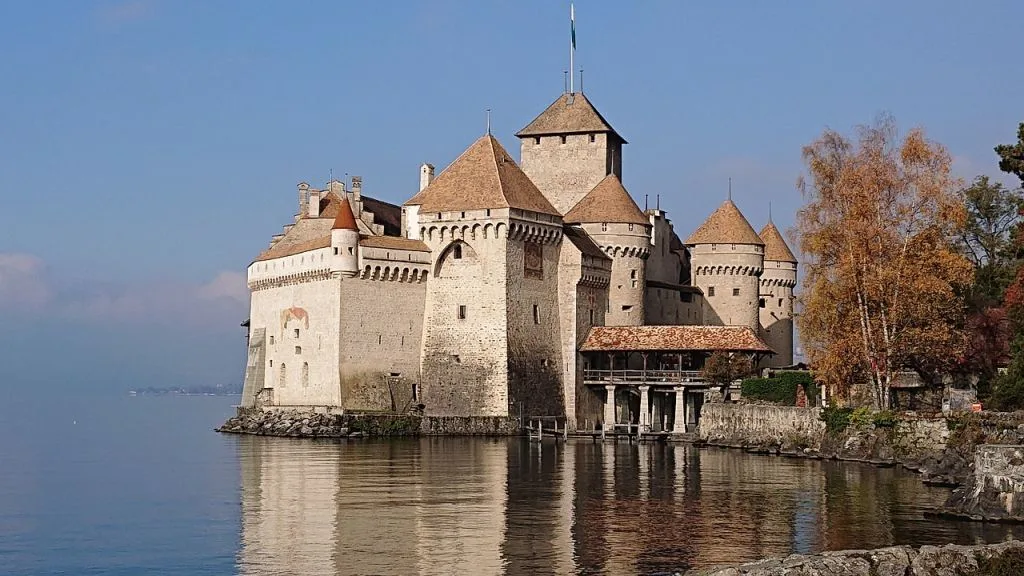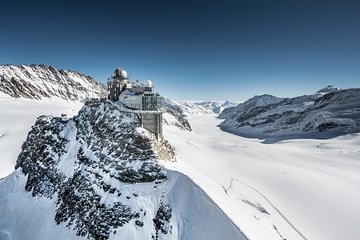Château de Chillon (Chillon Castle)

Address
Av. de Chillon 21, 1820 Veytaux, Switzerland
GPS
46.4149361, 6.9282788
Located on Lake Geneva, south of Veytaux in the canton of Vaud Château de Chillon, Chillon Castle is an island castle, situated at the eastern end of the lake, on the narrow shore between Montreux and Villeneuve, it provides access to the Rhône Alpine Valley.
Even in prehistoric ages, the rock island between Lake Geneva and the steep towering Alps was inhabited. The passage of ships on Lake Geneva and the crucial land route to the St. Bernhard Pass were both controlled from this island for hundreds of years. From the 12th to the 16th centuries, Chillon belonged to the Counts of Savoy, after which the inhabitants of Bern conquered the water fortress, and finally the citizens of Vaud triumphed.

The castle may be rented for a variety of events. Montreux is a ten-mile stretch of sheltered bays bordered by flower-lined promenades, exotic plants, and palm palms that may be reached by boat, bus, or foot from the Castle.
Every year, almost 400,000 people visit Chillon. They see 14th-century wall murals, subterranean vaults, parade halls, and a bedroom from the time of Bernese control (which has been maintained in its original shape). Two circular walls surround the entire complex, which consists of 25 buildings and three courtyards.
Château de Chillon (Chillon Castle) facts and figures
🏰 General Information
-
Name: Château de Chillon (Chillon Castle)
-
Location: On the shores of Lake Geneva, near Montreux, Canton of Vaud, Switzerland
-
Position: Built on a small rocky island just off the lake shore
-
Type: Medieval fortress and residence
-
Style: Romanesque and Gothic architectural elements
📜 History
-
First Mentioned: 1150s, though the site has been occupied since the Bronze Age
-
Strategic Use: Controlled the road to the St. Bernard Pass
-
Original Owners: House of Savoy (12th–16th century)
-
Bernese Rule: 1536–1798
-
Became Part of Vaud: After the Vaud Revolution and creation of the canton
🧱 Architecture & Features
-
Total Rooms: Over 40 rooms open to visitors
-
Towers: 4 main towers, including a prominent keep
-
Dungeons: Famous vaulted underground chambers used as prisons
-
Chapel: Decorated with 14th-century frescoes
-
Banquet Hall & Great Halls: Used for feasts and political meetings
-
Courtyards: Several inner courtyards with views over Lake Geneva
-
Defensive Features: Moat, thick stone walls, murder holes, drawbridges
🎭 Cultural Significance
-
Literary Fame: Inspired Lord Byron’s poem “The Prisoner of Chillon” (1816), about François Bonivard, a monk and political prisoner
-
Graffiti: Lord Byron carved his name into one of the pillars in the dungeon—still visible today
-
Museums & Exhibits: Includes medieval weaponry, furniture, historical documents, and Savoy period artifacts
👥 Visitors & Popularity
-
Annual Visitors: ~400,000–450,000 (pre-COVID figures)
-
One of Switzerland’s most-visited historic monuments
-
Popular day-trip destination from Montreux, Lausanne, or Geneva
🕓 Opening Hours
-
Open Year-Round: With seasonal schedule adjustments
-
Typical Hours: 9:00 AM – 5:00 PM (longer in summer)
-
Guided Tours: Available in multiple languages; also audio guides and printed materials
🎟️ Admission
-
Adults: ~CHF 13–15
-
Children (6–15): ~CHF 6
-
Family and group rates available
-
Swiss Museum Pass: Accepted
🎥 In Popular Culture
-
Featured in Swiss tourism campaigns
-
Frequently appears in paintings, travel books, and documentaries
-
Film location for period pieces and historical TV features
🚗 Getting There
-
By Train: To Montreux, then bus or walk (~45 min lakeside walk)
-
By Boat: Accessible via CGN boats on Lake Geneva
-
By Car: Parking available nearby
-
By Foot/Bike: Easily reachable via the Lake Geneva promenade
🌅 Fun Facts
-
Built on a natural island, giving it strong natural defense
-
The name “Chillon” is believed to derive from a Celtic word meaning “flat stone”
-
The castle has never been taken by force in its entire history
Chillon Castle is more than just photogenic—it’s a deep dive into centuries of history, culture, and architectural brilliance, right on the edge of one of Switzerland’s most beautiful lakes.





